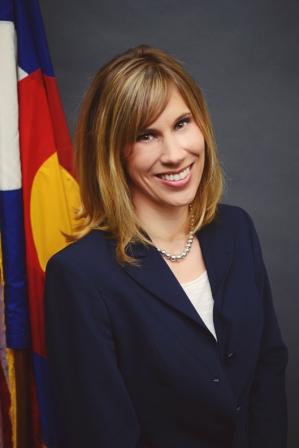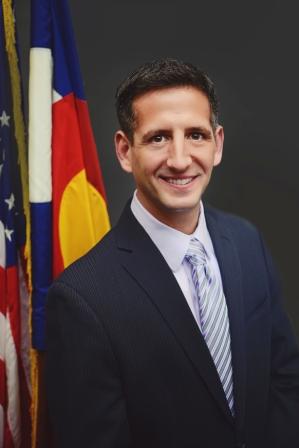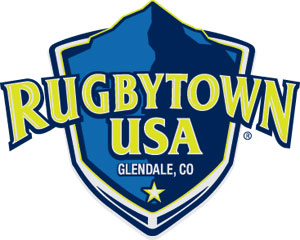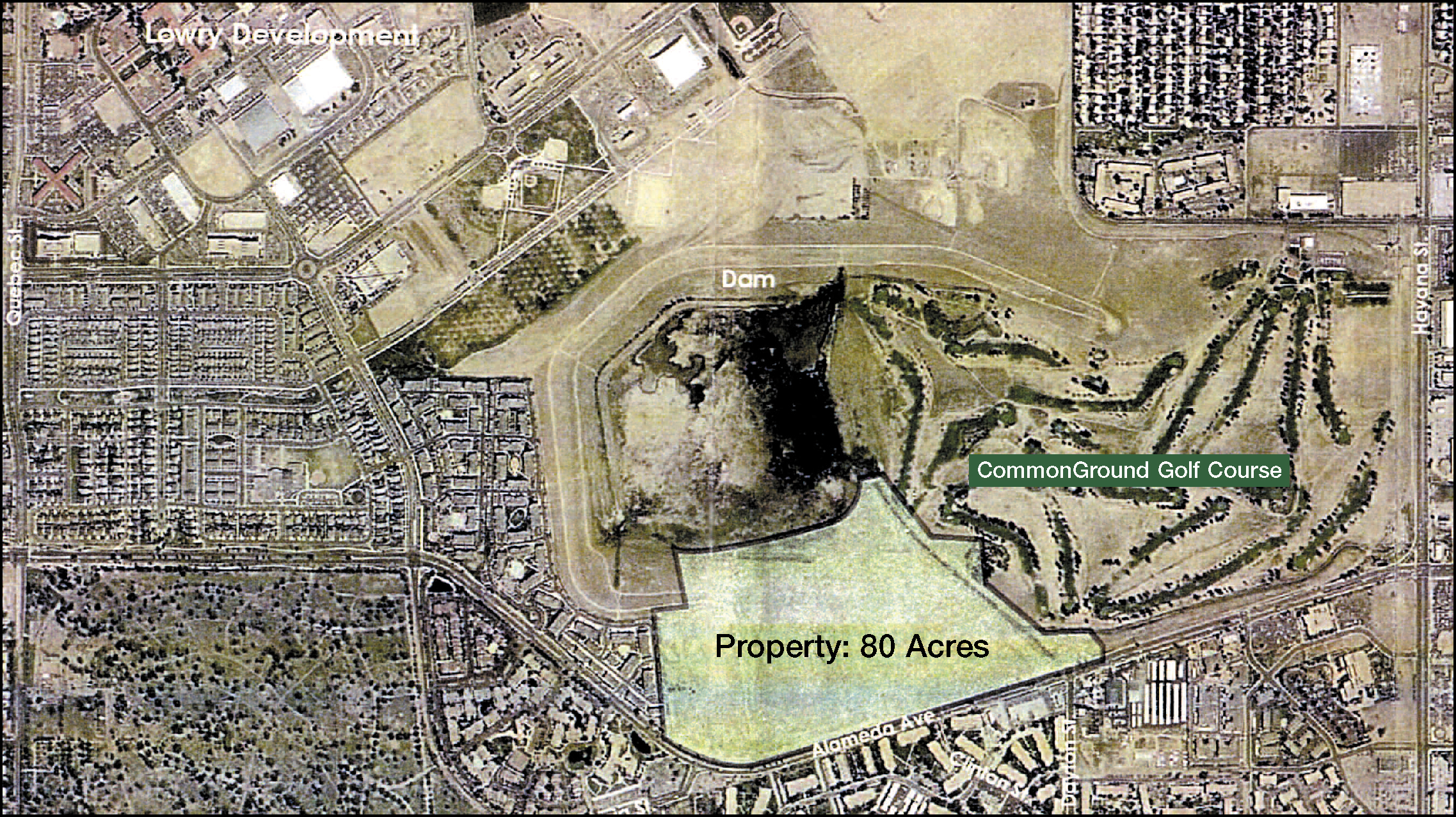
by Mark Smiley | Apr 29, 2014 | Main Articles
by Mark Smiley
The municipal election set for April 1, 2014, in the City of Glendale was cancelled due to the exact amount of candidates vying for four open council seats. Paula Bovo and Dario Ka tardzic were re-elected and will each serve four year terms. Doris Rigoni and Joseph Giglio were newly elected to the City Council. They replaced Ricky King and Pat Opper who each served eight years on the council and were term limited. Rigoni will serve until 2018 and Giglio’s term will end in 2016.
tardzic were re-elected and will each serve four year terms. Doris Rigoni and Joseph Giglio were newly elected to the City Council. They replaced Ricky King and Pat Opper who each served eight years on the council and were term limited. Rigoni will serve until 2018 and Giglio’s term will end in 2016.
Doris Rigoni has been active in Glendale, serving as Planning Commissioner for the past two years, and is passionate about the redevelopment of Glendale. Ms. Rigoni is an Assistant Vice President for Mile High Banks Commercial Real Estate. She specializes in commercial real estate loan origination, special asset restructuring, and disposition. Prior to her time at the bank, she spent 10 years in commercial real estate on the title/due diligence side of transactions. Her early career was in the public sector working directly for Colorado Governor Bill Owens in the Economic Development Community and for the Denver International Airport Partnership.
Rigoni graduated from the University of Colorado, Boulder, holds her Colorado real estate broker’s license, is a past Board Member for the Commercial Real Estate Women (CREW), and is currently active with the local NAIOP Chapter, sitting as the Membership Chair. Rigoni says she doesn’t have any specific plans for her four-year term but rather wants to listen to her constituents. “It is less about what I would like to see happen and more about what the citizens want to see  happen,” said Rigoni.
happen,” said Rigoni.
Joseph Giglio has been a Glendale resident since 2001 and has served on the Planning Commission since 2012. Giglio is President and CEO of Oncology Trials Insights, a Colorado company that works with drug developers, research institutions, and patients to improve the speed and effectiveness of oncology research. Previously, he served as President for Accrual Solutions, a Denver-based patient accrual management firm.
Giglio is originally from Rochester, New York. He received a Bachelor’s degree from the University of Buffalo and a Master of Business Administration degree from the University of Rochester.

by Mark Smiley | Apr 29, 2014 | Glendale City News
May 17 At Infinity Park
by Scott Krieger|
Writer for and on behalf of the City of Glendale
On Saturday May 17 at 3 p.m. the Glendale Raptors will battle it out in all likelihood against strong rival San Francisco Golden Gate Rugby Club (SFGG) for the championship of the newly formed Pacific Rugby Premiership (PRP). The new league is composed of seven top clubs in Denver and the West Coast and is considered to have a lot of the top rugby teams in the nation. But the disbandment of the rugby Super League and then the Elite Cup has resulted in there being no national championship this year containing all the top teams in the country. It is hoped that an Atlantic Rugby Premiership can be formed so all the top teams will vie for a national title next year, but there are no assurances that the same will occur.
Pacific Rugby Premiership (PRP). The new league is composed of seven top clubs in Denver and the West Coast and is considered to have a lot of the top rugby teams in the nation. But the disbandment of the rugby Super League and then the Elite Cup has resulted in there being no national championship this year containing all the top teams in the country. It is hoped that an Atlantic Rugby Premiership can be formed so all the top teams will vie for a national title next year, but there are no assurances that the same will occur.
In the meantime the Raptor-SFGG match is creating great anticipation. Glendale is on top of the PRP standing with only one loss but that loss was to SFGG out in San Francisco by the score of 31-26 in a seesaw match. A second regularly scheduled match between the clubs is set for for May 3, in Glendale ending the 14 week regular season of the PRP.
The PRP is set up to be a pipeline for the USA Eagles. In years past in the Super League, the level of competition varied to the point that many matches were decided by a large point margin. The PRP, more selective with its members, has reduced that component of the game and funneled both a great amount of talent and pointed coaching into each match, every week.
The premiership is still in the early stages of its existence, and plans to keep growing. It is already looking to integrate a new member, Park City Haggis, next season.
“The PRP has definitely proven to be the highest level of competition,” Glendale captain and seven-time Team USA member Zach Fenoglio said. “Hopefully the PRP has learned from the things that made the Super League great and will only lead to more success and higher competition for years to come.”
The seven clubs that make up the league already have a rich history in the development of the sport in the western United States, and ideally the PRP will only further that and continue the growth of the game.
Olympic Club traces its incredible roots back over 100 years to its founding in 1908. That year, they competed against teams from Stanford, California, and the University of Pacific. Not long after, they began an international search for more demanding competition. In 1913 they played a vaunted New Zealand club, and although they took the loss, it was much more of a match than even the USA National team put up against the All Blacks. In the 1960s, when most western rugby teams were just being formed, O-Club was reaching their peak of dominance, both domestically and overseas. The club has continued both touring and attracting new talent for the last 30 years. This season has fallen short of expectations, as the team is in seventh place with a record of 2-7.
Old Mission Beach Athletic Club (OMBAC) began playing rugby in 1954, initially only to satisfy the desire for organized competition. In 1966, team members were granted a petition to be sponsored in San Diego, and set off down the road of competitive play. Later in the 1960s, San Diego State graduates flocked to the club, instilling a new level of talent and athleticism. OMBAC was the first team to win both the 15s and 7s National Championships, and have done so many times over. The club took the full-side championships in 1988, ’89, ’91, ’93, ’94 and ’96, and continue to compete with the highest level of rugby clubs in the country. OMBAC is 4-3-1 and in fifth place in the standings.
Known around Southern California as Belmont Shore Rugby Club, the club was originally formed in 1964 as the Long Beach Rugby Club. Original founders were comprised mostly of Long Beach State football players as well as members of the United States Coast Guard. The team first started thriving in the ’80s, evolving then to be known as Belmont Shore. It was around this time they began to attract international talent and truly grew into a powerhouse. Belmont won its first National Championship in 1998, beating New York Old Blue. They used this as a springboard as they entered a decade of dominance, which has continued into their inception into the PRP. Shore is in third place in the PRP this year with a record of 5-4.
Founded a few short years after Belmont, the Denver Barbarians came to be in 1967. The first major post-collegiate rugby club in the region, the Barbos were initially formed by a collection of ex-college ruggers as well as lacrosse players in search of new competition. The club really did serve as pioneers for professional rugby in the region, as by the spring of 1968 three more teams had formed with more on the way. Denver won the National Championship in 1990 and has been competing at high levels both in 15s and 7s ever since. The Barbarians have fallen to fourth place this season after two recent losses to Glendale.
The early 1970s witnessed the birth of yet another powerhouse rugby club. Santa Monica Rugby Club was established in 1972 by graduates and rugby players of surrounding schools like UCLA and USC. The team found success almost immediately, traveling to a number of National Championships over the years, and taking home the title in both 2005 and 2006. Currently, they occupy sixth place in the league.
1988 brought forth the birth of San Francisco Golden Gate after the merger of two Division II teams, Barbary Coast and the Castaways. Throughout the ’90s, the team was a staple in the Final Four, but never captured the National Title. Over the years, though, SFGG has pumped out numerous players to both the USA Eagles as well as international squads. They have enjoyed sustained success so far this season, and sit in second place in the PRP with a record of 7-2.
Glendale comes in as the new kids on the block. Established in 2007, the Raptors have accomplished much in a short amount of time, serving as a benchmark for the sport and playing in RugbyTown USA. Winning the National Championship in 2011, the Raptors immediately made a name for themselves, and haven’t looked back since. Led by Head Coach Andre Snyman, the club sits atop the PRP standings with a record of 8-1.
Three games remain before the finals at Infinity Park. The Raptors have vastly outperformed expectations thus far this season, displaying premier rugby week after week in their chase for a title. They will travel to California to play the next two matches, before returning home for the final week’s match on May 3. “I want to keep the players focused and mentally sound by not burning them out with information overload but instead remaining cool, calm, and collected,” Snyman said.
On a current six-game win streak, the Raptors hope to ride their success through the next three weeks and give the city of Glendale a hometown team to cheer for in the finals at Infinity Park.

by Mark Smiley | Apr 29, 2014 | Main Articles
Highly Controversial Development May Yet Fail: Neighborhood Groups Rally
Johnson Admits To Rigged ‘Courtesy Zoning’ On Lowry Vista
by Glen Richardson
Amemorandum dated November 15, 2013 by Assistant Attorney General for Colorado Jennifer Robbins has thrown the entire massive Lowry Vista development into doubt. Eight years ago International Risk Group (IRG) got the City of Denver and Lowry Redevelopment Authority (LRA) to transfer to an IRG affiliate, IRG Redevelopment I, LLC (IRG-I), 80 acres of land for nothing that was supposed to be used only as a park or open space. Months later IRG sought and was eventually given the right to put a massive mixed use development on the property even though the land was supposed to be so contaminated that even watering the property would present a substantial risk to the public. Lowry Vista is located on East Alameda across from Windsor Gardens.
(LRA) to transfer to an IRG affiliate, IRG Redevelopment I, LLC (IRG-I), 80 acres of land for nothing that was supposed to be used only as a park or open space. Months later IRG sought and was eventually given the right to put a massive mixed use development on the property even though the land was supposed to be so contaminated that even watering the property would present a substantial risk to the public. Lowry Vista is located on East Alameda across from Windsor Gardens.
Open Space To Massive Mixed Use Development
The Denver City Council approved the rezoning of Lowry Vista in January 2010 by a 12 to 1 vote despite adamant and overwhelming opposition from citizen and neighborhood groups. The push for the development by Councilwoman Marcia Johnson in whose district the project was located resulted in such a outcry that Johnson did not run for reelection in 2011 and her actions regarding Lowry Vista permanently stained her reputation in many neighborhoods in the district and across the city.
AG Letter
The Attorney General’s November 15 letter informed IRG that before the Colorado Department of Public Health and Environment (Colorado Health) could consider approval of preliminary development activities for Lowry Vista, IRG-I would need to get the Air Force to void its restriction on its original deed that Lowry Vista could only be used as “open space/non-irrigated park” and to get the Air Force to agree to remain liable for land fill contaminants even if the property was developed, an action which the Air Force previously refused to do.
On December 13, 2013, IRG-I wrote to the Air Force requesting such action in a very oblique manner. Experts indicate there is no reason for the Air Force to subject itself to the potential liability that would result from IRG-I’s requests. They, however, also note that there is a reason why lobbyists in Washington, D.C. are paid millions to accomplish the seemingly impossible from the federal government on behalf of clients.
Moreover, insiders indicate that Mayor Michael Hancock is rumored to be strongly lobbying on behalf of IRG to do away with the open space restrictions. Hancock’s lobbying actions are reportedly being kept sub rosa as he is already in political hot water for destroying open space at Hentzell Park for a development, all the while claiming he is a strong supporter of parks and open space.
IRG has been in an ongoing battle with Colorado Health over Lowry Vista ever since the Denver City Council approved the massive development. In a letter dated November 29, 2013, Ann K. Wei as “Counsel” for IRG-I argued that the term “open space/ non-irrigated park” was not defined and therefore IRG-I’s developmental activities for a massive mixed-use development were somehow not inconsistent with the terms. In the letter IRG-I asserted Colorado Health’s claims to the contrary were “overreaching, arbitrary and capricious.” The Assistant Attorney General’s November 15, 2013, letter basically shot down those claims on behalf of Colorado Health.
The Attorney General’s Office appears to have questions concerning the trustworthiness of IRG-I. On November 18, 2013, Jennifer Robbins for the Attorney General wrote directly to Sam Rupe of the Air Force explaining what it was requiring and why, rather than having IRG act as an intermediary.
IRG-I’s Sly Request
Brent Anderson’s (CEO IRG-I) letter of request dated December 13, 2012, on behalf of IRG-I to the Air Force is a model of obliqueness. It never refers the fact that the Air Force placed a restrictive covenant of use to only “open space/non-irrigated park” nor does the cover letter note that IRG was asking the Air Force to remain on the hook for contaminant liability even when IRG was changing the use to a massive mixed use development. Instead Anderson simply asks that the Air Force should acknowledge that IRG-I’s actions are consistent with the restrictive covenant.
Whether the Air Force will see through the IRG-I sly verbiage whereby a massive mixed use development becomes “consistent” with a restrictive covenant that the property be used only for “open space/non-irrigated park” is unclear and it is unknown what effect Mayor Hancock’s apparent lobbying efforts will have.
The Rise And Fall Of Councilwoman Marcia Johnson
While the City Council’s approval of the Lowry Vista project occurred January 25, 2012, its sordid circumstances reverberate still today. Prior to the Lowry Vista debacle Marcia Johnson was generally a well-respected councilwoman first elected in 2003 and re-elected in 2007 and best known for her work on Westerly Creek. After the Lowry Vista affair she has become loathed by many residents throughout the Cherry Creek Valley and her name synonymous with what is what wrong with the Denver City Council. Even though she was eligible to run for re-election in 2011 she declined to do so as neighborhood groups were out canvassing to find a candidate to oust her. She has, however, continued to assert that she did nothing unethical or wrong regarding Lowry Vista.
Secrets Uncovered
It was discovered by the Chronicle (October 2008) that in 2005 even before IRG got LRA to essentially give it 80 acres of prime land for nothing, a secret $1 million payment had been committed by IRG affiliate to Denver for acceptable zoning for the landfill. Opponents called the million dollar payment illegal contract zoning. Neighborhood groups also discovered that Johnson had taken various campaign contributions from IRG partnerships and affiliates which helped explain to them why it appeared that she was in the back pocket of the developer since 2006.
However, what particularly shocked neighborhood groups was that under the Denver City Council’s unwritten practice of so called “courtesy zoning” all IRG had to do was get Johnson’s acquiescence to its scheme and the rest of the council would turn a blind eye to what was occurring. The outrage by neighbor groups across the city over the Lowry Vista hearing before the City Council on January 25, 2010, continues to this day.
Larry Ambrose, president of the Sloan’s Lake Neighborhood Association in northwest Denver and president of the Inter-Neighborhood Cooperation — the umbrella organization for all neighbor associations in Denver — several months back (December 15, 2013)wrote a guest commentary in The Denver Post titled “Why Developers Win Out In Denver.” He stated: “The most notorious example of the dangers of courtesy zoning is displayed in the Lowry Vista Rezoning in 2009. Eighty-seven percent of the speakers, including every registered neighborhood organization in Southeast Denver, spoke against the plan and stayed at City Hall until 2 a.m. to hear the outcome. Despite the fact that the site was an unmitigated toxic waste dump and citizen testimony was overwhelmingly against the plan, the council obediently followed (by a vote of 12-1) the recommendation of Councilwoman Marcia Johnson to pass the 400,000-square-foot development, which remains vacant today. All that was necessary were the magic words uttered by one council member and the votes fell into place.”
Johnson replied back in The Denver Post two weeks later (December 28, 2013) under the title “Process Was Ethical in Lowry Vista Rezoning” in which she declared:
“When looking at zoning change applications, I applied a bull’s eye with those closest to the center having the most impact on my decision. This parcel is directly across from Windsor Gardens, a community of well over 3,000 people. Residents told me, in public meetings I held, that having a grocery store, the proposed anchor, and other shops just a shuttle stop away would be a huge help since some use public transportation when shopping. Those 3,000 voices were represented by one person in favor of the zoning change, at the public hearing.”
Neighborhood Outrage
Neighborhood groups found her admissions in the article shocking. “Her problem,” stated Mayfair neighborhood resident Trish Abbott, “is that she never was a particularly good liar. She appeared to be in the back pocket of the developer from the beginning. In her entire eight years on City Council she never gave a damn about Windsor Gardens or the retirees that live there. She apparently didn’t even pay any attention at the hearing. The Board of Windsor Gardens before the hearing revoked its original support for the development. She really is one despicable human being.”
In addition Johnson in her article did not dispute Ambrose’s charge that the Denver City Council works on the unofficial policy of rigged “courtesy zoning” which means a developer only needs the support of the councilperson for the district where the development occurs to gain approval from the whole Denver City Council. As a result council members pay absolutely no attention to what the public has to say at public hearings. Johnson confessed “courtesy zoning” had occurred declaring in the article “My colleagues believed I had done my homework and concurred. This deference is hardily unethical.”
Abbott responds, “Of course what she is admitting to in the article is extremely unethical if not outright illegal. What is the point of a public hearing in which citizens give testimony if the council pays no attention to it? If all that happens is her fellow council members ‘believe’ she has ‘done her homework’ and the public be damned then the system totally falls apart. She did not testify or give admissible evidence. She admits that her fellow council members did not consider the five hours of public testimony but acted solely on the belief she had done her homework. This should make the entire Lowry Vista rezoning void. I am not sure that what she is admitting to in the article may not be criminal in nature. It’s time an honest DA or the Colorado Attorney General look at what is going on at Denver zoning approval meetings and bring indictments where appropriate.”

by Mark Smiley | Apr 28, 2014 | Editorials
 There is probably no more obvious municipal government rip-off than the photo radar and red light camera program run in Denver, Aurora, and seven other cities in Colorado. Its ostensible purpose is so-called “public safety” but everyone knows that its real purpose is a way for municipalities to pick the pockets of its citizenry.
There is probably no more obvious municipal government rip-off than the photo radar and red light camera program run in Denver, Aurora, and seven other cities in Colorado. Its ostensible purpose is so-called “public safety” but everyone knows that its real purpose is a way for municipalities to pick the pockets of its citizenry.
State Senator Scott Renfro has for years been introducing legislation which would ban cities in Colorado from utilizing red light and speed cameras. The legislation is traditionally shot down in the first committee that it is sent to at the State Legislature. But this year something is afoot and the likelihood of the bill actually becoming law has dramatically increased.
Florida’s experience regarding red light and speed cameras is instructive. Florida’s red light cameras were not producing revenues at anticipated levels. Ways were sought to increase revenues and shortening yellow lights was viewed as an effective method. Unfortunately, there were, in fact, federal guidelines on the duration of yellow lights in order to best prevent accidents and Florida had adopted those guidelines. But as discovered by Channel 10 News in Tampa, the Florida Department of Transportation (FDOT) quietly changed the state policy on yellow below the federal recommendations. This was followed by FDOT and local municipalities working together to decrease yellow light length at intersections with red light cameras. This collaboration had its intended effect of greatly increasing the amount of red light tickets issued in Florida, but in turn increased the amounts of accidents at these intersections.
The mere fact that these Florida bureaucrats were willing to increase the number of individuals maimed and killed at these intersections provided it increased revenues is highly instructive. As stated by James Walker, executive director of the nonprofit National Motorist Association, “Red light cameras are a for-profit business between cities, camera companies and the state.”
In Denver, the increase the profits at all costs attitude regarding red light cameras was also demonstrated when Denver’s red light cameras were not producing the anticipated profits. The solution was once again to move the goal posts. In this case in lieu of shortening duration of the yellow lights, which was getting bad reviews across the country due to the carnage it was creating, the Denver red light camera company had a different idea — deem a car to have run a red light even if it just touched the pedestrian white line — well before the intersection itself. Voila! The number of red light tickets grew exponentially.
Study after study has shown red light cameras tend to increase accidents even when the yellow lights are left at the federally recommended levels as drivers try to avoid a ticket by jamming on their brakes.
Regarding photo radar, many studies have shown the most effective way to slow traffic down is to place an interactive LED sign that alerts motorists at what specific speed they are traveling and what the legal speed limit is. Of course the interactive LED signs do not produce revenue and that is why Denver has many more photo radar vans than LED signs.
Red light and speed cameras are also a lucrative source of municipal corruption. A fired executive of Redflex Traffic Systems admitted that the company doled out bribes and gifts to dozens of municipalities in 14 states, including Colorado, to get them to utilize red light and speed cameras.
Could all of the evidence have finally gotten the attention of state legislatures? Well, something has. Renfro’s bill, S.B. 181 was sent to the State Senate’s Veterans and Military Affairs Committee which is known as the “kill committee,” as the members for the majority party take a blood oath to kill any bill the leadership of the majority party does not like. Miraculously the bill passed by a 3 to 2 bipartisan margin. That means that the Democratic leadership in the Senate supports the bill. The Democratic Speaker of the House Mark Ferrandino tweeted that he too supports the bill and will work for its passage in the House.
Further evidence of the favored status of the bill is the fact when it reached the floor of the Senate it passed by a “voice vote” which means opponents of the bill had no way of knowing who was for the bill and who was not before coming to final vote. The bill got final Senate approval by a wide 21-14 bipartisan margin.
Will S.B. 181 become law? It certainly looks like it will with House approval highly likely given the Speaker’s strong public support for the legislation. Governor Hickenlooper has been doing his standard Hamlet routine concerning the legislation saying he is studying the matter. This assertion by the governor is of course total malarkey. The President of the Senate (Morgan Carroll), Speaker of the House (Mark Ferrandino) and the Governor are all Democrats and jointly work out in advance what legislation will be allowed to become law and what will not. This is all Kabuki theater. If Hickenlooper opposed the legislation he would have had Carroll stop it in the “kill committee.” There is no political upside to vetoing a highly popular bill, especially when this is the year you are seeking re-election and may have a tough fight ahead.
It is too early to celebrate but a major victory for the citizenry may be just over the horizon. The city councils of Denver, Aurora and seven other cities may have to figure out another way to fleece their citizens from their money to make up the shortfall, but they will undoubtedly be up to the task. In the meantime, chalk one up for average everyday citizens in Colorado.
— Editorial Board

by Mark Smiley | Apr 4, 2014 | Glendale City News
by Eiden Hughes
Writer for  and on behalf of the City of Glendale
and on behalf of the City of Glendale
The 2014 Raptors in the Community Program is underway and already connecting members of the Raptors organization to the Greater Metro Denver Area. Giving back to the community is one of the club’s core values. In past years, volunteers from both men’s and women’s squads have donated their time to some of Colorado’s most-dedicated nonprofit organizations through the Raptors in the Community Program.
This year the program has evolved —Denver-based Sign Language XL takes over the title of presenting sponsor, and a new level of volunteer, the Ambassador, has been introduced.
Sign Language XL is one of the country’s leaders in digital printing, who pride themselves on their ability to provide vibrant, high resolution images on any scale and on virtually any substrate. In Denver, their finished products are visible at Pepsi Center, Dick’s Sporting Goods Park, First Bank Center in Broomfield and, of course, Infinity Park.
The Raptors have also added an advanced level of volunteer to the ranks, called the Ambassador. While volunteer opportunities are still available on a regular basis for everyone within the Glendale Raptors, the Ambassadors take their volunteerism to the next level. They will be considered the go-to representatives of the team for all outreach initiatives.
The Ambassadors, known as the Elite Eight, endured rigorous interviews and are committed to donating a minimum of four hours per month (in addition to their full-time jobs, and training, playing and traveling for rugby) to various charitable activities and outreach programs.
The Raptors Ambassadors for 2014 are: Men’s Team Captain Zach Fenoglio, Jack Haward, Joanna “JoJo” Kitlinski, Chad London, Joash Peko, Casey Rock, Gedda Rodriguez-Howard and Juliann Tordonato.
“While we had many qualified ambassador candidates, it was apparent in our interviews that these eight truly possess the leadership characteristics and communications skills that are a critical component to the upcoming community service opportunities,” said Glendale Deputy City Manager and Director of Finance Linda Cassaday. “We are proud to have them representing the City of Glendale and the Raptors in the community!”
Recently, the Ambassadors attended Centura Soup for the Soul (March 10) and they visited Children’s Hospital on March 26. Upcoming events include another visit to Children’s Hospital on April 30, and the Kids Running America event in Washington Park on April 27. There are several events slated for the remainder of the year, and new events are being added regularly through the request feature on the RITC portion of the Raptors’ website.
The “Unity” In Community
Perhaps one of the most interesting facts about the eight chosen Ambassadors is that only two of them — Fenoglio and Rock — are Colorado natives. Even so, both have left their native state at one time or another to pursue higher education, realize career ambitions, or even play rugby abroad.
The other six Ambassadors have come to Glendale from far and wide. Haward is a native of England, who first came to Colorado a year ago to play summer mountain rugby in Breckenridge. London is from South Africa, and originally came to the U.S. to attend Palmer College, where he played rugby and became a licensed chiropractor. Rodriguez-Howard rounds out the overseas group, having grown up in Bogota, Columbia, after a move across the Atlantic from Spain.
Peko, Tordonato and Kitlinski hail from the U.S. West Coast, Vermont and Michigan respectively. Regardless of their reasons for moving to Colorado, they, along with the rest of the Raptors, are all united in rugby, and are committed to sharing the sport and making a difference in the community they now call home.
“I wanted to serve as an Ambassador because it seemed like a great way to give back to the community of Glendale, as well as spread the word about the rugby programs,” Tordonato said. “The RITC program offers a unique opportunity to really engage with the community. Being more prominent locally, and really giving back to the city that funds our rugby program, will also help spread the word about our teams and draw more people to games to support the Raptors.”
Pacific Rugby Premiership forward Rock echoed her sentiments, and described the inclusive nature of the sport. “I wanted to serve as an ambassador because it’s such an exciting time to be a part of rugby. The sport is really picking up momentum in this country; not only is it a fast-paced, exciting game, but the culture of rugby is very positive and inclusive. Being an ambassador helps me feel connected to the growth of rugby’s popularity in this community and country, which I’m very proud to be a part of.”
The nature of any community is to be inclusive to its members. Connecting the City of Glendale, the Raptors rugby club and the Greater Denver community is a natural step forward as the sport becomes more prominent in the area, and throughout the country as a whole.

 tardzic were re-elected and will each serve four year terms. Doris Rigoni and Joseph Giglio were newly elected to the City Council. They replaced Ricky King and Pat Opper who each served eight years on the council and were term limited. Rigoni will serve until 2018 and Giglio’s term will end in 2016.
tardzic were re-elected and will each serve four year terms. Doris Rigoni and Joseph Giglio were newly elected to the City Council. They replaced Ricky King and Pat Opper who each served eight years on the council and were term limited. Rigoni will serve until 2018 and Giglio’s term will end in 2016. happen,” said Rigoni.
happen,” said Rigoni.



 (LRA) to transfer to an IRG affiliate, IRG Redevelopment I, LLC (IRG-I), 80 acres of land for nothing that was supposed to be used only as a park or open space. Months later IRG sought and was eventually given the right to put a massive mixed use development on the property even though the land was supposed to be so contaminated that even watering the property would present a substantial risk to the public. Lowry Vista is located on East Alameda across from Windsor Gardens.
(LRA) to transfer to an IRG affiliate, IRG Redevelopment I, LLC (IRG-I), 80 acres of land for nothing that was supposed to be used only as a park or open space. Months later IRG sought and was eventually given the right to put a massive mixed use development on the property even though the land was supposed to be so contaminated that even watering the property would present a substantial risk to the public. Lowry Vista is located on East Alameda across from Windsor Gardens.
